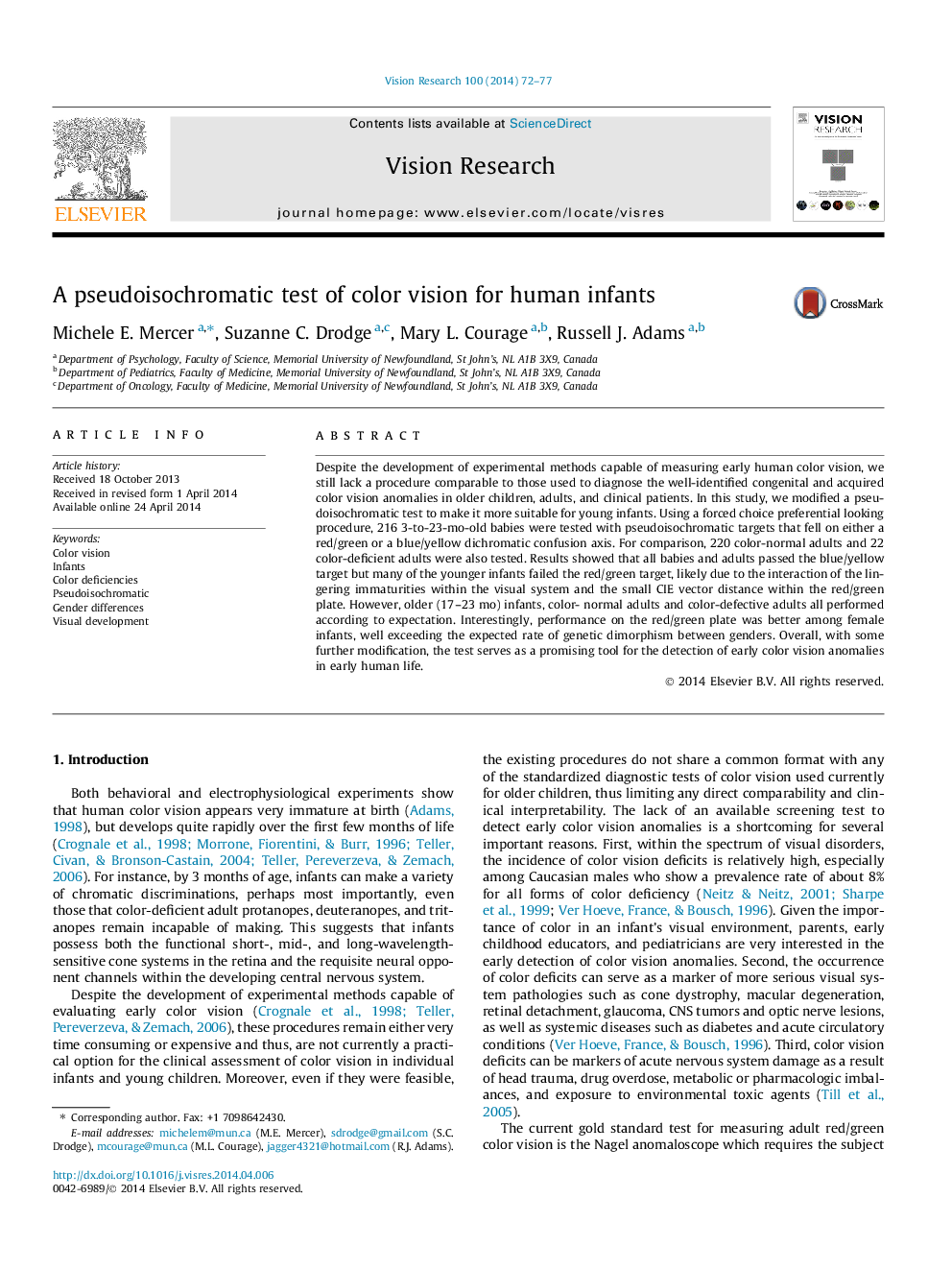| Article ID | Journal | Published Year | Pages | File Type |
|---|---|---|---|---|
| 6203328 | Vision Research | 2014 | 6 Pages |
â¢This study reports the first data from a pseudoisochromatic plate test modified for infants.â¢95% of infants completed the test, with all detecting the plate representing a blue/yellow confusion axis.â¢Most older (16-23 mo) but not younger babies could detect the plate representing a red/green axis.â¢The failure rate among male infants was significantly higher than that for females.â¢The test shows good validity in both color-normal and color-deficient adults.
Despite the development of experimental methods capable of measuring early human color vision, we still lack a procedure comparable to those used to diagnose the well-identified congenital and acquired color vision anomalies in older children, adults, and clinical patients. In this study, we modified a pseudoisochromatic test to make it more suitable for young infants. Using a forced choice preferential looking procedure, 216 3-to-23-mo-old babies were tested with pseudoisochromatic targets that fell on either a red/green or a blue/yellow dichromatic confusion axis. For comparison, 220 color-normal adults and 22 color-deficient adults were also tested. Results showed that all babies and adults passed the blue/yellow target but many of the younger infants failed the red/green target, likely due to the interaction of the lingering immaturities within the visual system and the small CIE vector distance within the red/green plate. However, older (17-23 mo) infants, color- normal adults and color-defective adults all performed according to expectation. Interestingly, performance on the red/green plate was better among female infants, well exceeding the expected rate of genetic dimorphism between genders. Overall, with some further modification, the test serves as a promising tool for the detection of early color vision anomalies in early human life.
